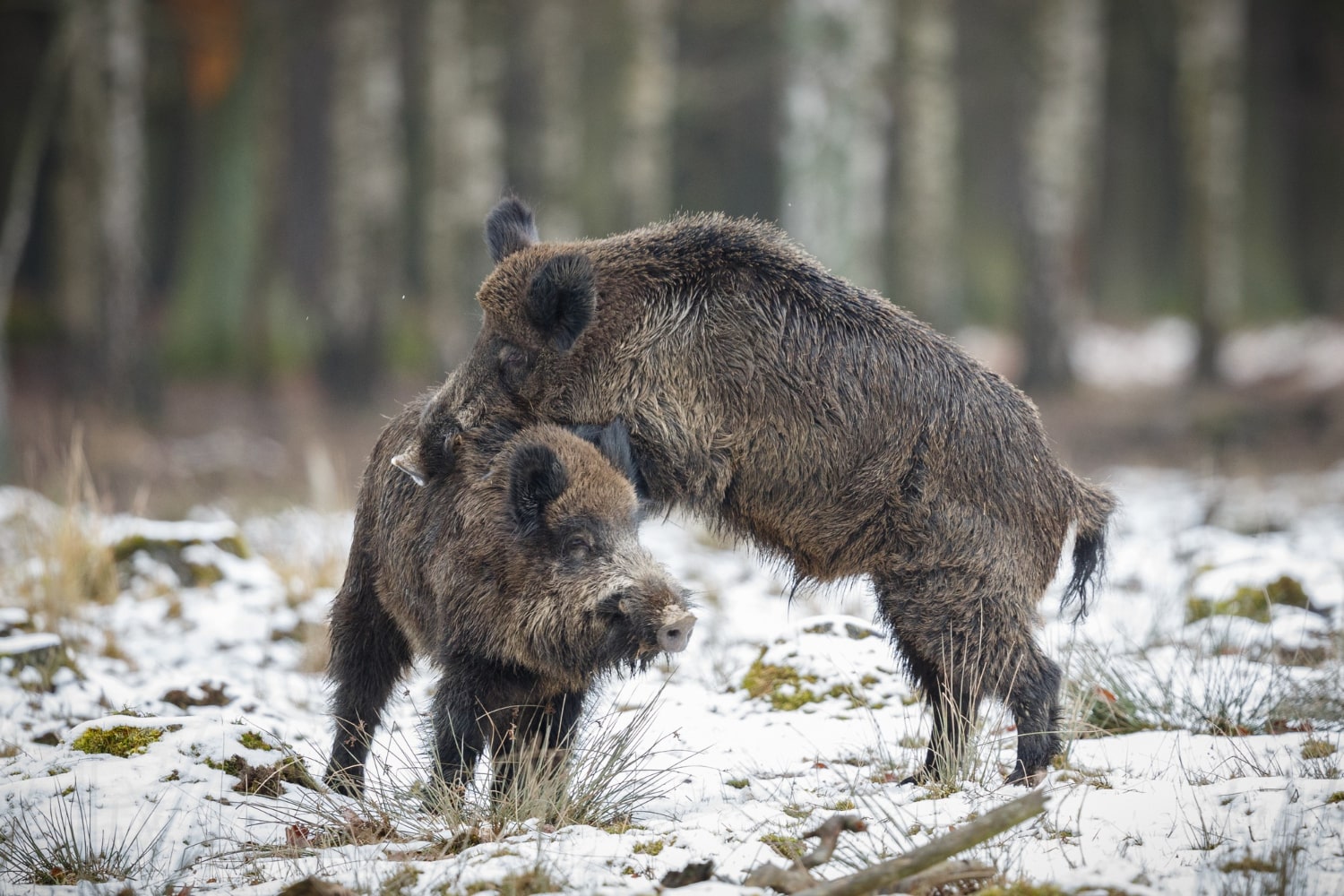Wild pigs are among the oldest mammals inhabiting our planet, attracting great interest from biologists and nature enthusiasts alike. Their behaviour, appearance, and way of life contain many incredible facts you may not have known. These animals play an important role in ecosystems, influence landscapes, and interact with other species in the wild. Let’s explore fascinating facts that will help you better understand the world of wild pigs and their role in nature.
- Wild pigs are highly adaptable animals, capable of living in a variety of environments—from dense forests to open grasslands—making them one of the most widespread mammals worldwide.
- They possess an excellent sense of smell, far superior to that of humans. This keen olfaction helps them locate food even buried underground and avoid dangers.
- Their social structure is quite complex. Wild pigs form groups called sounders, usually consisting of females and their offspring. Males tend to live alone or in small bachelor groups.
- Wild pigs are omnivores, with diets including roots, fruits, mushrooms, insects, small vertebrates, and even carrion. They actively root the soil with their strong snouts to find food.
- By rooting, wild pigs alter soil structure, which affects vegetation and promotes natural aeration of the earth, thus improving conditions for plant growth.
- The gestation period of wild pigs lasts about 114 days, similar to domestic pigs. A female can give birth to 4 to 12 piglets per litter, depending on environmental conditions.
- Wild piglets have striped coats that help them camouflage among vegetation and protect against predators. This pattern fades a few months after birth.
- Wild pigs can reach speeds up to 48 km/h, enabling them to effectively evade predators and move quickly across their territory.
- They use a wide range of vocalizations for communication, including grunts, squeals, and alarm calls, which help maintain contact within the group.
- Their sharp and strong tusks are used for defence against enemies and fights with other males during the mating season.
- Wild pigs exhibit a remarkable ability to regenerate — wounds heal quickly and tissue repair is more efficient compared to many other mammals.
- They can carry various parasites and diseases that may be dangerous to humans, especially through contact with their faeces or blood.
- They are mostly nocturnal and crepuscular, which helps them avoid humans and predators, while also allowing efficient food search during cooler hours.
- Wild pigs are strong swimmers and often cross water bodies over long distances in search of food or new habitats.
- These animals are intelligent and quick learners, able to avoid traps or exploit new food sources, making them difficult to control in the wild.
- They have excellent memory and can find their way back to a food source even weeks after first discovering it.
- Their tusks are used not only for rooting soil but also for defence and combat with rivals, showing their aggression when necessary.
- Wild pigs play an important role in seed dispersal since they spread plant seeds through their droppings after eating fruits.
- In some regions, wild pigs have become invasive, harming local ecosystems by consuming rare plants and displacing native animals.
- They were first domesticated by humans around 9,000 years ago, and modern domestic pigs descend from these wild ancestors.
- Their skin is highly sensitive, so they often wallow in mud or sand to protect themselves from parasites and overheating.
- Thanks to strong legs, wild pigs can overcome difficult obstacles in forests, jump over fallen trees, and navigate steep slopes.
- They act as natural cleaners by consuming carrion and animal remains, thus helping keep the environment free of organic waste.
- Wild pigs frequently change their living areas to avoid overcrowding and resource depletion, helping maintain ecological balance.
- In many cultures, wild pigs symbolize strength and endurance, and their images are common in art and folklore.
- They use scents to mark their territories, which helps prevent conflicts between different groups.
- Wild pigs can recognise the voices of their group members, a rare trait among animals.
- Their lifespan in the wild ranges from 10 to 14 years, although it depends heavily on predation and environmental conditions.
- During hot summers, wild pigs seek water sources and often gather near streams or swamps, where they also cool themselves by wallowing in mud.
- They have a highly developed sense of touch, enabling effective spatial orientation even in darkness.
- Wild pigs often cooperate when searching for food, which increases the survival chances of the group under challenging conditions.
- During the rutting season, males can become very aggressive and fight for mating rights using their powerful teeth.
- They can carry African swine fever, posing a risk to domestic pig farming.
- In many nature reserves and national parks, wild pigs are an essential part of the natural landscape and contribute to biodiversity.
- They are able to adapt to climate changes and endure sudden temperature fluctuations, demonstrating great resilience.
- Sometimes wild pigs display playful behaviour, which is part of their social interactions and strengthens bonds within the group.
- Females show great care for their piglets and protect them from danger, even risking their own lives.
- They produce various scents for communication, helping coordinate group actions and maintain social ties.
Wild pigs are amazing creatures about which you may not have known many interesting facts. Their flexibility, intelligence, and adaptability make them vital members of ecosystems. Despite their occasional aggression, these animals play a key role in maintaining natural balance. Observing them can reveal many incredible insights into wild nature and the interactions among its inhabitants.





